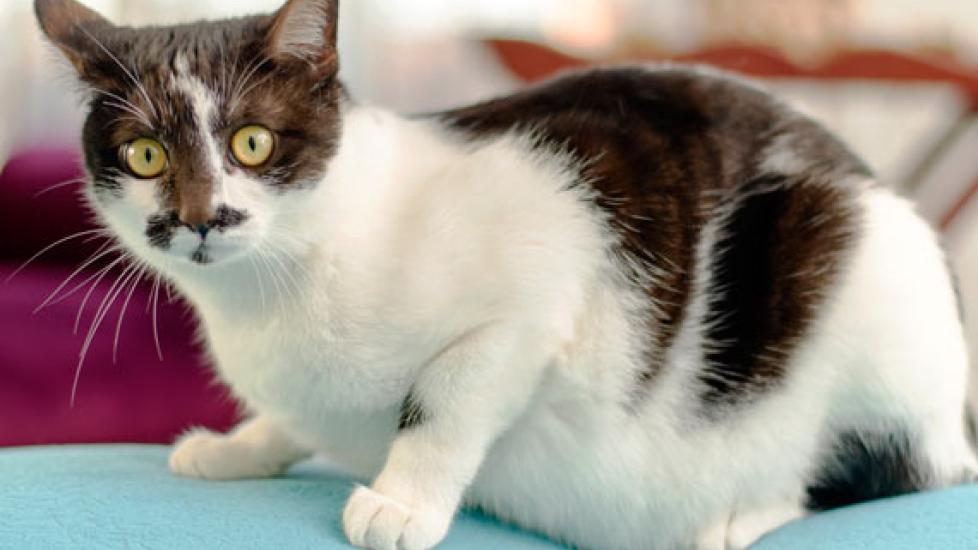Are You Overfeeding Your Cat?
Cats… they’re small and tend to spend a most of their day sleeping. What does this mean? They need tiny meals. But many owners have trouble feeding their cats so little, even when a failure to do so inexorably leads to obesity.
So let’s take a look at just how little a “typical” cat might need to eat in a day. Veterinarians determine a cat’s caloric needs (officially known as their maintenance energy requirement, or MER) in the following manner:
- Divide the cat’s body weight in pounds by 2.2 to convert to kilograms (kg)
- Determine the cat’s Resting Energy Requirement (RER) using the formula
RER = 70 (body weight in kg)0.75
- Determine the cat’s MER by multiplying his or her RER by an appropriate multiplier. The ones that are used most frequently for adult cats are:
Typical neutered pet: 1.2
Needs to lose weight: 0.8
Veterinarians can use different multipliers to determine the needs of cats in other situations, for example lactating queens or cats who are recovering from serious illness or injuries, but we’ll just stick to the basics today.
Here’s what the calculation looks like for a neutered cat who weighs 10 pounds and is at his or her ideal body weight:
- 10 lbs / 2.2 = 4.54 kg
- 70 x 4.54 0.75 = 218 cal/day
- 1.2 x 218 = 262 cal/day
If our 10 pound cat is overweight the calculation is as follows:
- 10 lbs / 2.2 = 4.54 kg
- 70 x 4.54 0.75 = 218 cal/day
- 0.8 x 218 = 174 cal/day
Now let’s look at the caloric contents of some foods. I’ve researched several for us to use. There’s nothing special about these foods; they’re just good representations of what you might find in the cat food aisle at your neighborhood pet supply store:
- Maintenance Canned Cat Food A — 130 calories per 5.8 oz can
- Maintenance Dry Cat Food B — 339 calories per cup
- Weight Loss Canned Cat Food C — 108 calories per 5.8 oz can
- Weight Loss Dry Cat Food D — 261 calories per cup
So our cat at a healthy weight would need to eat approximately 2 cans of the maintenance food, or 4/5 of a cup of the dry over the course of the day, not taking into account any treats and extras.
Our fat cat, on the other hand, could only eat about 1 ½ of the canned weight loss food, or about ¾ of a cup of the dry weight loss formulation. Divide those amounts by 2 or 3, depending on how frequently you feed your cats, and you can see how small cat meals truly need to be.
In all honesty, it is impossible for formulas to tell us exactly how many calories a cat needs. Variations in both directions of up to 20% are not unusual. Taking this into account, our cat at a healthy weight could need to take in anywhere between 210 and 314 calories, while our overweight patient would need to eat between 139 and 208 calories a day.
To determine what is right for a particular individual, we have to keep a close eye on the cat's weight, body condition, and overall wellbeing, and adjust the amount we are offering accordingly.

Dr. Jennifer Coates
Image: Thinkstock
